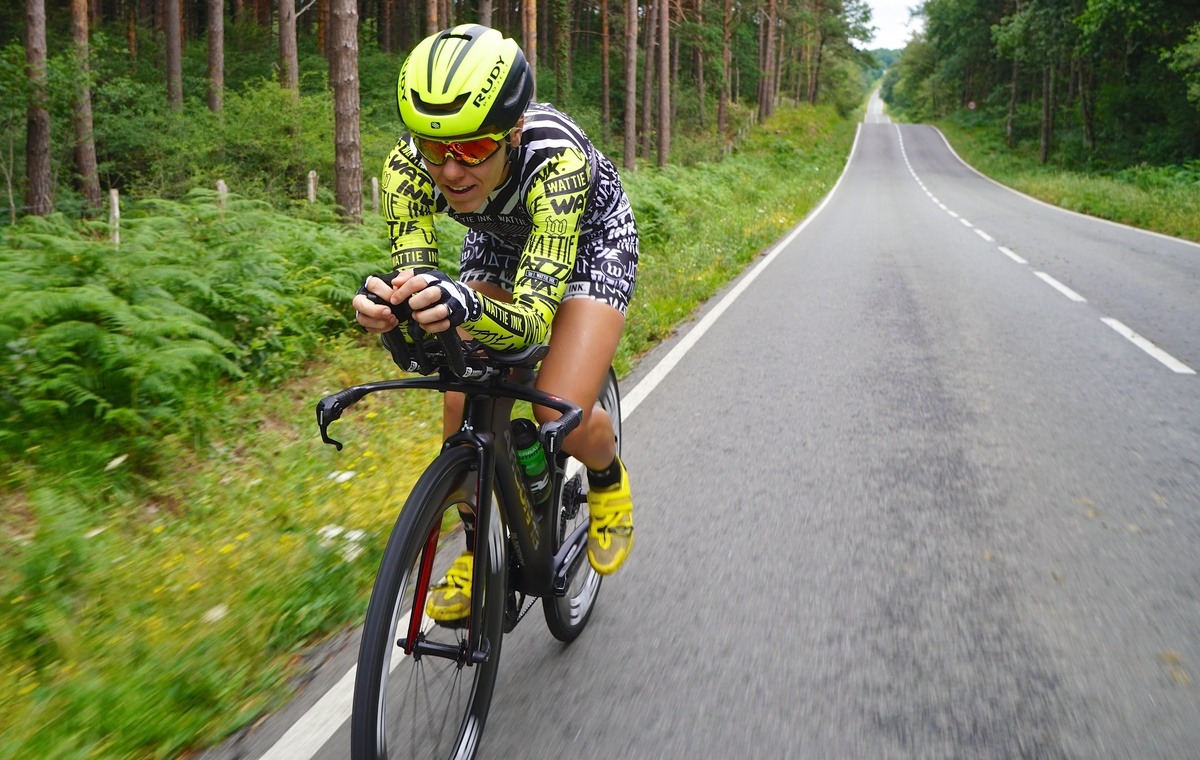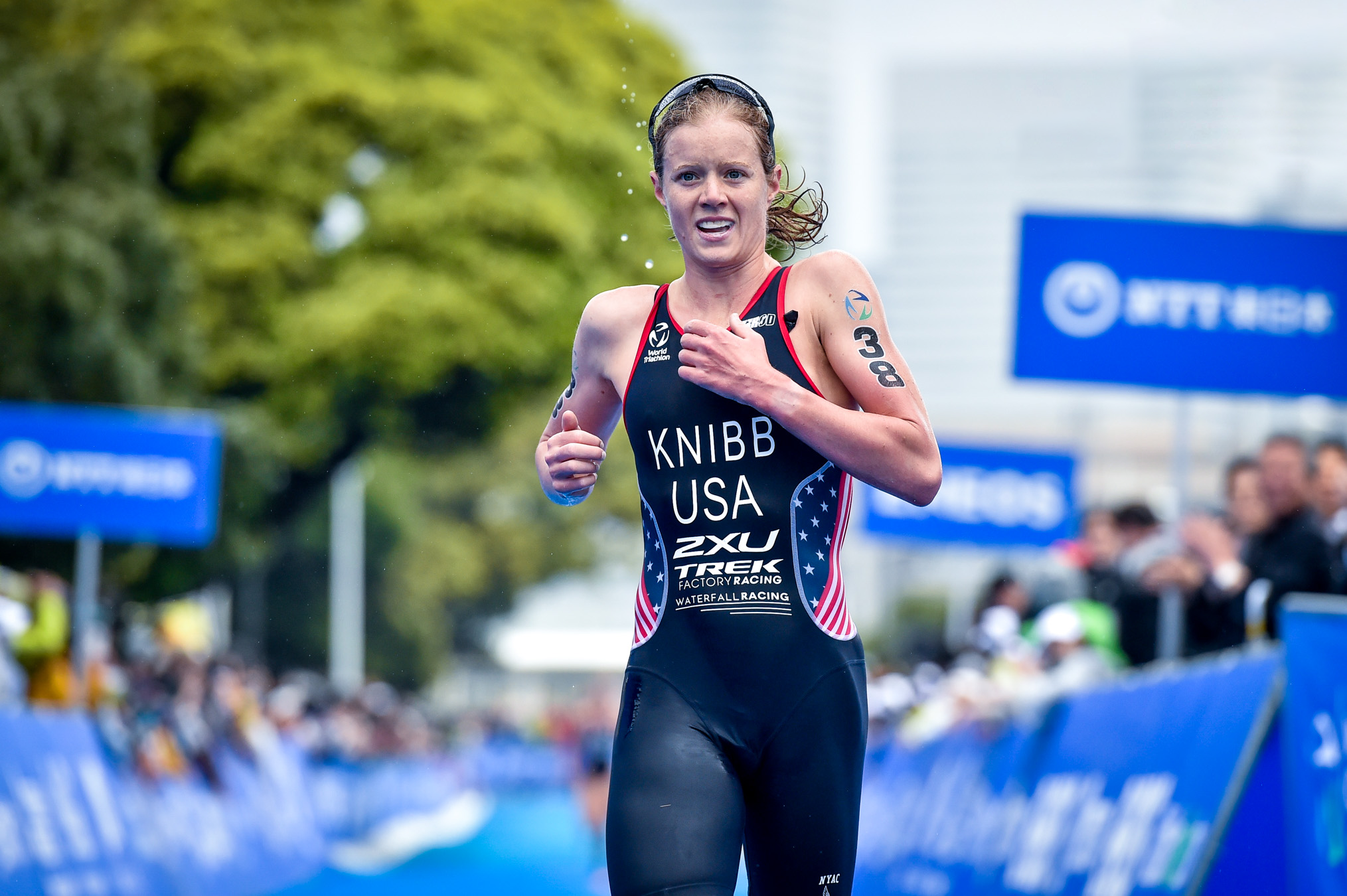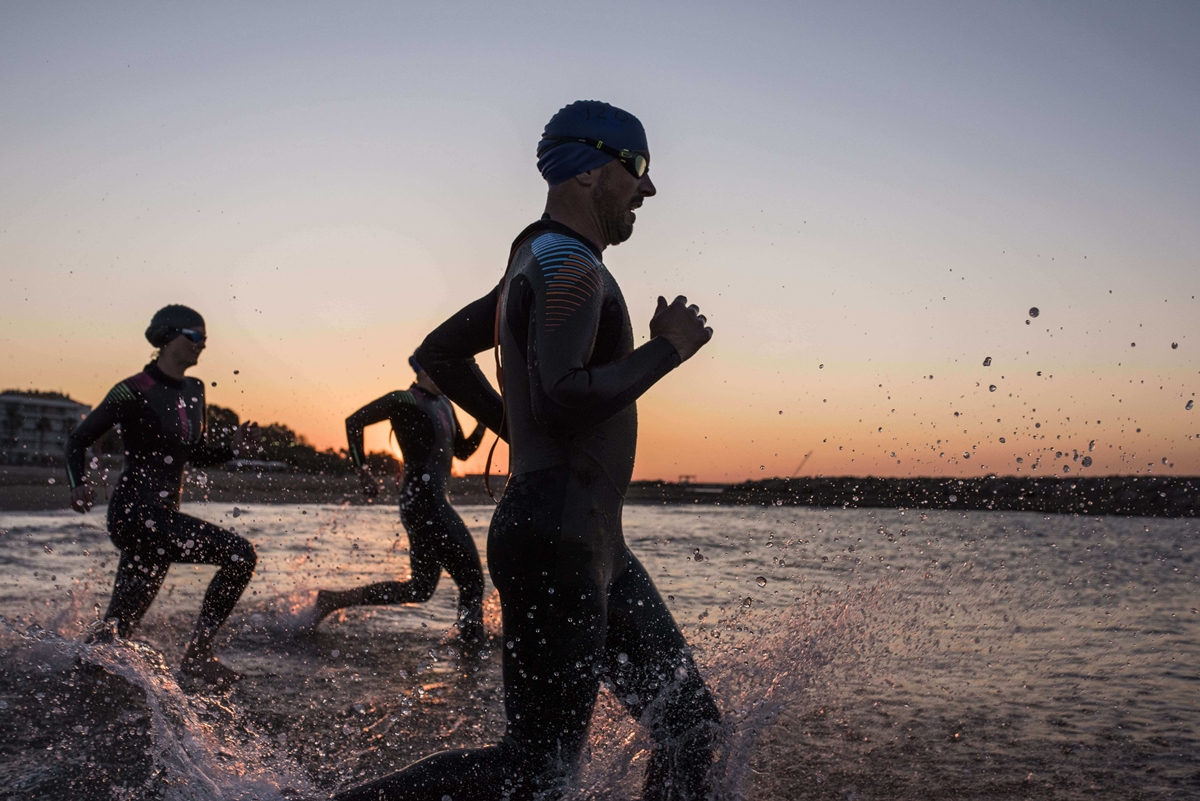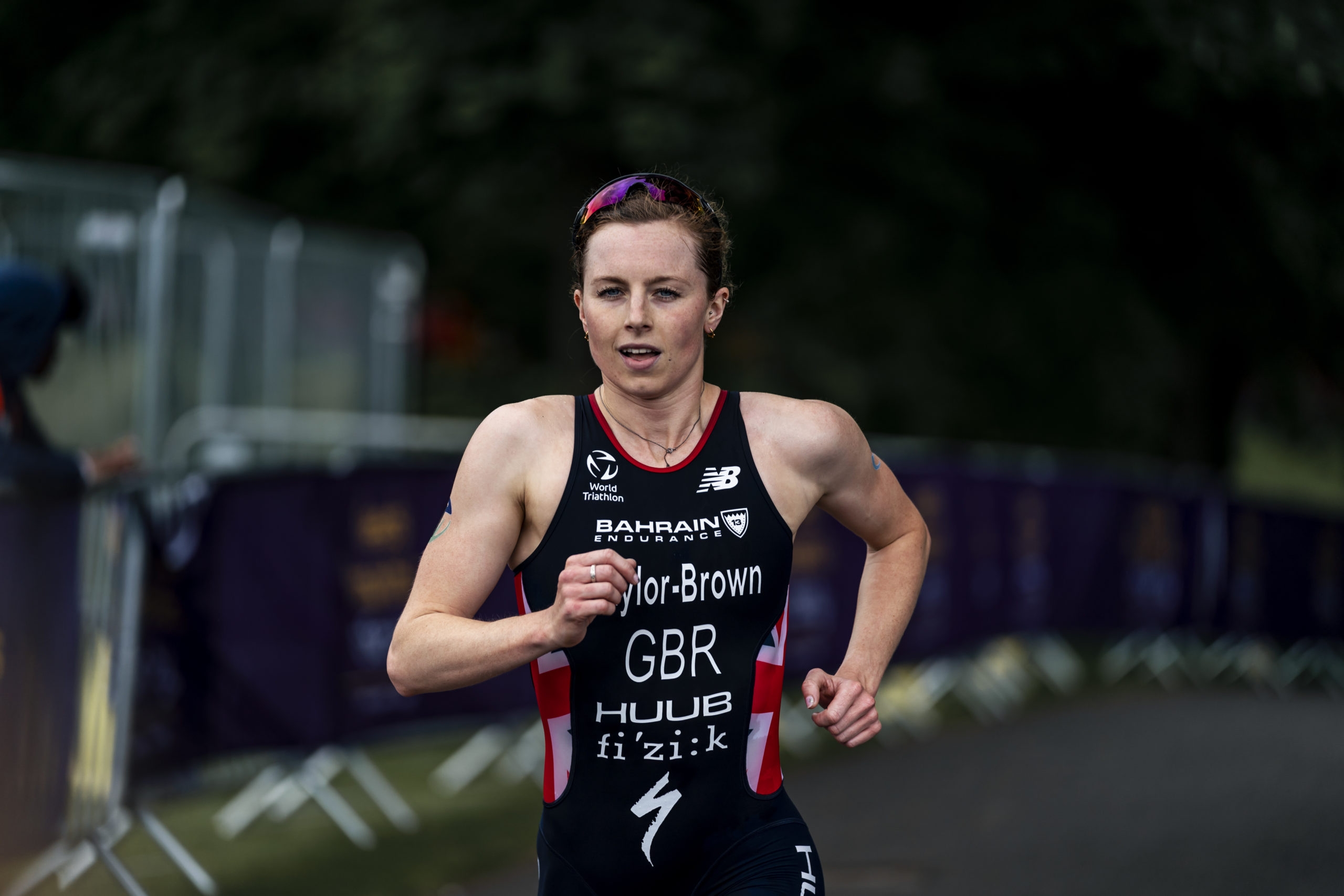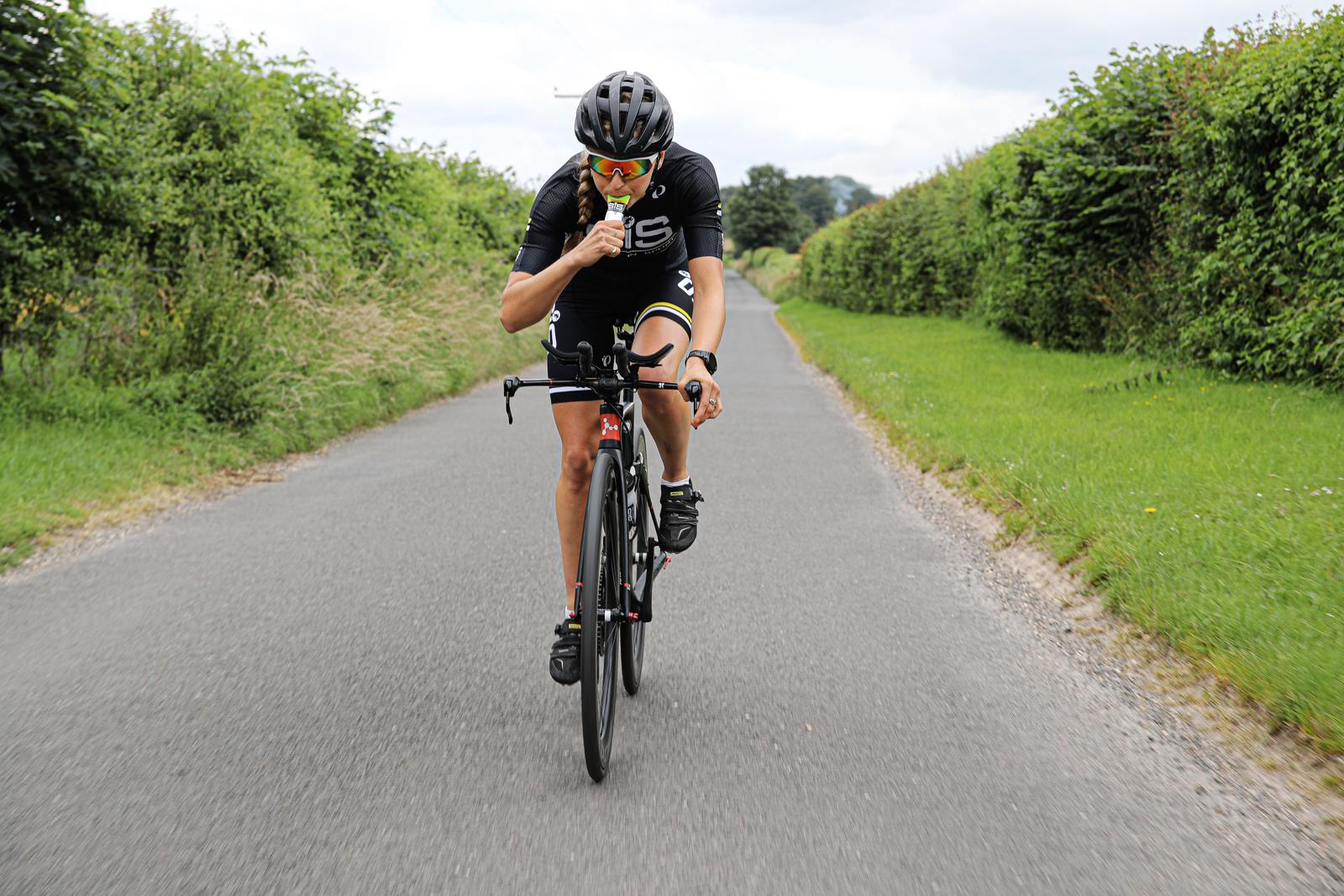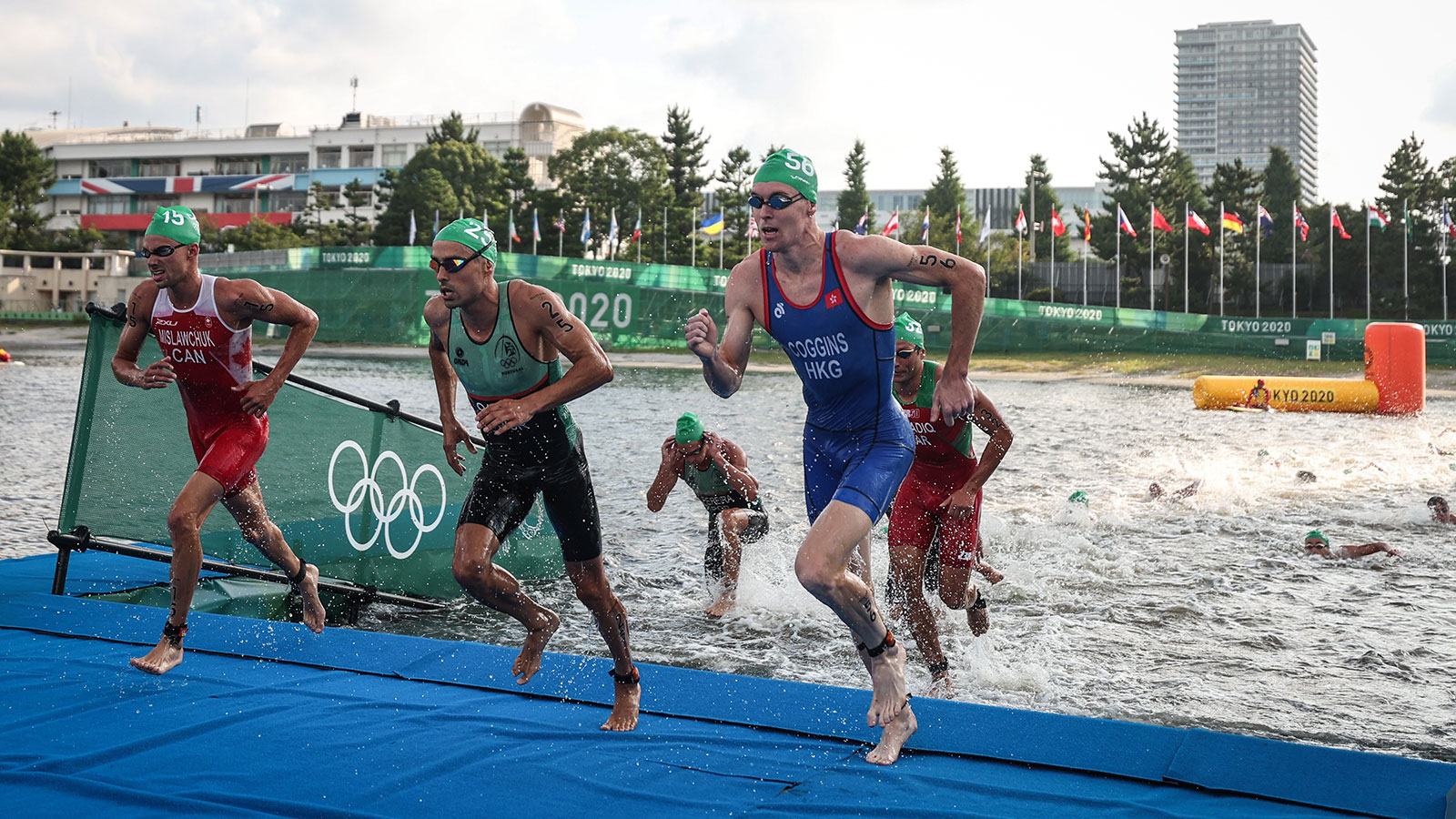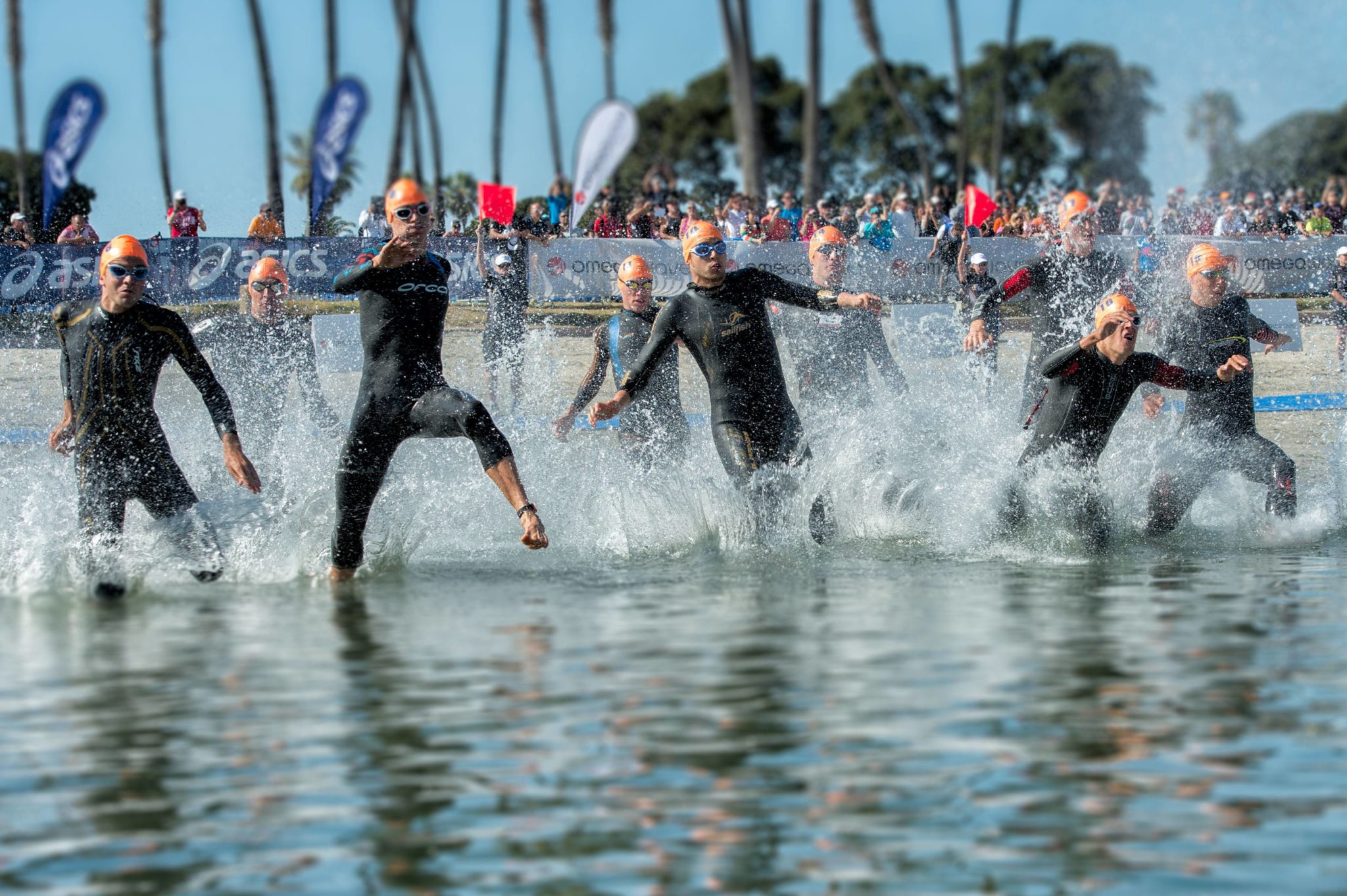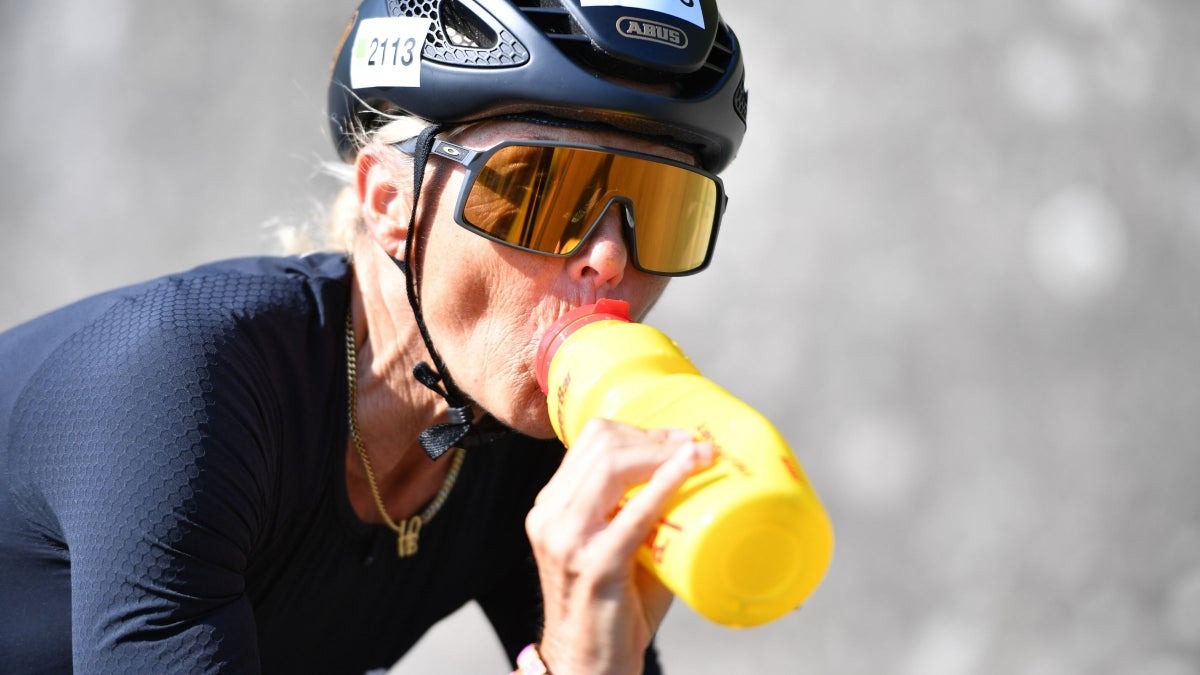Home>Misc>Featured>How Many Calories To Eat During Triathlon


Featured
How Many Calories To Eat During Triathlon
Published: August 12, 2023
Find out the recommended calorie intake during a triathlon with our featured guide. Have the optimal nutrition plan to fuel your race.
Introduction
Participating in a triathlon is a demanding physical endeavor that requires fueling your body with the right amount of calories to sustain energy levels and optimize performance. Whether you’re a seasoned triathlete or a beginner, understanding your caloric needs during a triathlon is crucial for achieving your goals and avoiding fatigue or depletion.
In this article, we will explore the factors that affect your caloric requirements during a triathlon, discuss the importance of pre-race, during race, and post-race nutrition strategies, and provide tips on how to monitor and adjust your caloric intake for optimal performance.
Triathlons consist of three disciplines: swimming, cycling, and running. Each of these activities requires a different level of energy expenditure, and therefore, your caloric needs will vary depending on the duration and intensity of the race. Proper nutrition can make a significant difference in your performance, endurance, and recovery.
It is important to note that the information provided in this article should be used as general guidance, and individual needs may vary based on factors such as age, gender, weight, metabolism, and training status. Consulting with a sports nutritionist or registered dietitian can provide personalized recommendations tailored to your specific needs and goals.
Now let’s dive into the details of caloric needs for triathlon and how you can optimize your nutrition to conquer the challenges of this multi-faceted sport.
Understanding Caloric Needs for Triathlon
Triathlons are high-intensity endurance events that place significant demands on the body. To meet these demands, it is important to understand your caloric needs and the role nutrition plays in fueling your performance.
When participating in a triathlon, your body requires a combination of carbohydrates, fats, and proteins to provide energy, support muscle function, and aid in post-race recovery. Carbohydrates are the primary source of fuel during high-intensity exercises like swimming, cycling, and running.
Generally, the caloric requirements for triathletes range from 500 to 1,000 calories per hour, depending on factors such as body weight, age, gender, and exercise intensity. Understanding your individual energy expenditure is crucial for determining your specific caloric needs. This can be done through tests like indirect calorimetry, which measures your oxygen consumption and carbon dioxide production to estimate calorie burn.
In addition to energy expenditure, it is essential to consider your basal metabolic rate (BMR), which is the number of calories your body needs at rest. Your BMR accounts for the energy required for basic bodily functions such as breathing, digestion, and cell production. By factoring in both energy expenditure and BMR, you can determine your overall caloric needs for training and race day.
While it is crucial to meet your caloric needs, it is equally important to ensure a balanced intake of macronutrients. Carbohydrates should make up the majority of your caloric intake, providing the energy needed for intense exercise. Aim to consume complex carbohydrates like whole grains, fruits, and vegetables, as they provide a sustained release of energy. Protein plays a vital role in repairing and rebuilding muscles, while fats provide additional energy and aid in the absorption of fat-soluble vitamins.
However, it is important to note that individual needs may vary. Some athletes may thrive on a higher-carbohydrate approach, while others may have better performance outcomes with a higher fat intake. Experimenting with different ratios and consulting with a nutrition professional can help you identify the nutrition approach that works best for you.
Understanding your caloric needs for triathlon and ensuring a balanced macronutrient intake will allow you to optimize your performance and improve your overall race-day experience.
Factors Affecting Caloric Requirements
Calculating your caloric intake for a triathlon isn’t as simple as following a one-size-fits-all approach. Several factors come into play when determining your specific caloric requirements. Understanding these factors will help you tailor your nutrition plan to meet your individual needs.
1. Bodyweight: Your bodyweight plays a significant role in determining your caloric needs. Generally, the more you weigh, the more calories you will burn during physical activity. However, it is essential to strike a balance and not excessively restrict your caloric intake, as this can lead to a lack of energy and hinder performance.
2. Exercise Intensity: The intensity of your triathlon training and race directly impacts your caloric requirements. Higher-intensity activities, such as sprinting or uphill cycling, will burn more calories compared to low-intensity exercises. It is vital to adjust your caloric intake accordingly to ensure adequate energy supply for the duration and intensity of the race.
3. Duration of Activity: The duration of your triathlon also affects your caloric needs. Longer races, such as Ironman events, require a higher caloric intake to sustain energy levels throughout the entirety of the race. Shorter races, like sprint or Olympic distance, may have slightly lower caloric requirements.
4. Speed of Exercise: The speed at which you perform each discipline in a triathlon can impact your caloric expenditure. Faster speeds will burn more calories compared to slower speeds. It is important to consider this when estimating your caloric requirements and adjusting your nutrition plan.
5. Environmental Factors: Environmental conditions, such as temperature and humidity, can influence your caloric needs. Hot and humid conditions, for example, can increase your sweat rate and overall energy expenditure. It is essential to hydrate adequately and adjust your nutrition plan to compensate for these factors.
6. Individual Metabolism: Each person’s metabolism is unique, which means that individuals may vary in the number of calories they burn at rest and during exercise. Some individuals have a naturally faster metabolism, while others have a slower metabolism. Understanding your metabolism can help you tailor your caloric intake to optimize performance.
By considering these factors, you can more accurately determine your caloric requirements for a triathlon. It is important to note that these factors are not static and may change over time or vary based on your training program. Regularly monitoring and reassessing your caloric needs will ensure that you are fueling your body optimally for performance and recovery.
Pre-Race Nutrition Strategy
The pre-race period is crucial for fueling your body and optimizing performance during a triathlon. Your nutrition plan in the days leading up to the race can significantly impact your energy levels, endurance, and overall race-day experience.
Here are some key strategies to consider when planning your pre-race nutrition:
1. Carbohydrate Loading: Carbohydrate loading is a technique used by endurance athletes to maximize glycogen stores in the muscles. This involves increasing your carbohydrate intake in the days leading up to the race. Aim to consume a diet rich in complex carbohydrates such as whole grains, fruits, and vegetables.
2. Hydration: Proper hydration is crucial prior to a triathlon. Start hydrating a few days before the race by drinking plenty of water and electrolyte-rich fluids. Avoid excessive caffeine or alcohol consumption, as these can lead to dehydration.
3. Timing of Meals: Optimize your meal timing to ensure proper digestion and minimize gastrointestinal disturbances. Aim to have your last significant meal 2-3 hours before the race, consisting of easily digestible carbohydrates and a moderate amount of protein. Additionally, have a light snack or energy drink around 30-60 minutes before the race to provide an extra energy boost.
4. Individual Experimentation: The pre-race nutrition strategy is highly individualized. Experiment with different foods and timing to determine what works best for you. Some athletes may prefer a larger meal the night before the race, while others may feel better with smaller, more frequent meals leading up to the event.
5. Manage Nervousness: Nervousness is common before a race and can affect your appetite. If you’re feeling anxious and find it challenging to eat a full meal, focus on consuming smaller, easily digestible snacks or liquid nutrition options such as smoothies or sports drinks. This will provide the necessary fuel without overwhelming your digestive system.
Remember, the pre-race nutrition strategy is not the time to experiment with new foods or supplements. Stick to familiar, well-tolerated foods that you have tested during your training sessions. It is also essential to remain well-rested and prioritize quality sleep in the days leading up to the race to ensure optimal performance.
By following a well-planned pre-race nutrition strategy, you can ensure that your body is properly fueled and ready to tackle the challenges of the triathlon.
During Race Nutrition Strategy
Proper fueling during a triathlon is crucial for maintaining energy levels, sustaining performance, and preventing fatigue. Implementing an effective nutrition strategy during the race can help you perform at your best. Here are some key considerations for your during-race nutrition:
1. Stay Hydrated: Hydration is paramount during a triathlon. Aim to drink water or electrolyte-rich fluids at regular intervals throughout the race. Sip small amounts frequently to avoid feeling bloated or overwhelmed. Use your training sessions to determine your fluid needs and hone in on a hydration strategy that works best for you.
2. Consume Carbohydrates: Carbohydrates are the primary fuel source during endurance exercise. Consuming easily digestible carbohydrates in the form of gels, energy bars, or sports drinks can help maintain glycogen levels and provide a quick source of energy. Aim to consume approximately 30-60 grams of carbohydrates per hour, depending on your individual needs and the duration of the race.
3. Electrolyte Replacement: Electrolytes, including sodium, potassium, and magnesium, play a vital role in maintaining the balance of fluids in your body. Sweat loss during the race can lead to electrolyte imbalances, which can affect performance. Consider using electrolyte tablets or drinks to replenish these vital minerals during the race.
4. Practice Portion Control: It can be tempting to consume a large amount of food or fluids during a race, but be cautious not to overload your digestive system. Experiment during training sessions to determine the right portions and frequency of consumption that work best for you. Small, frequent fuelings are generally recommended to maintain a steady supply of energy without causing discomfort.
5. Listen to Your Body: Every athlete is different, and what works for one person may not work for another. Listen to your body’s signals and adjust your nutrition strategy accordingly. Pay attention to hunger, thirst, and energy levels. If you feel depleted or experience stomach discomfort, make necessary changes to your nutrition plan.
6. Stay Mentally Focused: Maintaining mental focus during the race is crucial. Pre-planning your nutrition strategy and having easily accessible fuel sources, such as storing gels in your cycling jersey pockets or wearing a hydration pack, can help you stay on track and avoid unnecessary distractions or delays during the race.
Remember, your during-race nutrition strategy should be practiced and refined through your training sessions. What works for one person may not work for another, so it is important to find what suits your body and preferences. A well-executed during-race nutrition plan will help keep your energy levels high, allowing you to perform at your best throughout the entire triathlon.
Post-Race Nutrition Strategy
Your post-race nutrition strategy is just as important as your pre-race and during-race plans. Properly refueling and recovering after a triathlon is vital for muscle repair, glycogen replenishment, and overall recovery. Here are some key considerations for your post-race nutrition strategy:
1. Rehydrate: Replenishing fluids lost during the race is crucial. Begin by hydrating with water or electrolyte-rich fluids immediately after crossing the finish line. Continue to hydrate throughout the post-race period to restore optimal hydration levels.
2. Restore Glycogen: During triathlons, your glycogen stores, which provide energy for your muscles, are depleted. Consuming carbohydrates after the race helps replenish these stores. Focus on consuming easily digestible carbohydrates, such as fruits, whole grains, or sports drinks, within 30 to 60 minutes after the race.
3. Include Protein: Including adequate protein in your post-race meal is essential for muscle repair and recovery. Aim for a combination of lean proteins such as chicken, fish, tofu, or legumes. Protein shakes or bars can also be convenient options to provide a quick source of protein.
4. Incorporate Antioxidants: Intense exercise produces free radicals that can cause oxidative stress in the body. Including antioxidant-rich foods such as colorful fruits and vegetables can help combat this oxidative stress and support recovery.
5. Don’t Forget about Electrolytes: Similar to during the race, it’s important to replenish electrolytes post-race. Consuming electrolyte-rich foods or beverages, such as coconut water or sports drinks, can assist in restoring electrolyte balance.
6. Listen to Your Body: Pay attention to your hunger and fullness cues. While it’s important to replenish your energy stores, it’s also crucial to avoid overeating. Eat until you feel satisfied, rather than overly full.
7. Rest and Recover: Alongside nutrition, adequate rest and recovery are essential. Allow your body time to heal and repair by getting sufficient sleep and incorporating rest days into your post-race schedule.
Remember, the post-race period is a time to celebrate your accomplishment and prioritize self-care. Nourishing your body with proper nutrition and focusing on recovery will help set the stage for future success.
Monitoring and Adjusting Caloric Intake
Monitoring and adjusting your caloric intake is a crucial aspect of optimizing your performance and achieving your goals in triathlon. As your training progresses and your body adapts, it’s important to regularly assess and modify your caloric needs to ensure you’re fueling appropriately. Here are some strategies for monitoring and adjusting your caloric intake:
1. Track Your Intake: Keeping a food diary or using nutrition-tracking apps can help you gain insight into your daily caloric intake. Pay attention to portion sizes, macronutrient distribution, and the quality of your food choices. This information will serve as a baseline for evaluating your current nutrition plan.
2. Monitor Your Performance: Regularly assess your performance during training and races. Are you hitting your desired paces? Are you experiencing frequent fatigue or lack of energy? These indicators can provide valuable information about whether you’re adequately fueling your body. If you consistently struggle during workouts or notice a decline in performance, it may be a sign that you need to adjust your caloric intake.
3. Consult with a Professional: Seeking guidance from a sports nutritionist or registered dietitian can provide valuable insights into your specific needs. These professionals can help determine your individual caloric requirements based on factors such as body composition, training load, and specific goals. They can also provide personalized recommendations for adjusting your nutrition plan to support optimal performance.
4. Listen to Your Body: Pay attention to hunger and fullness cues, as well as your energy levels throughout the day. If you consistently feel hungry or lack energy during training sessions, it may be an indication that you need to increase your caloric intake. Conversely, if you find yourself consistently feeling overly full or struggling with weight gain, it may be a sign to reassess portion sizes and adjust your intake accordingly.
5. Periodize Your Nutrition: Recognize that your caloric needs may vary throughout the training year. Adjust your intake to align with the different phases of your training, such as base building, intense training blocks, and recovery periods. This periodization approach ensures that you’re providing adequate fuel during high-intensity periods and allowing for proper recovery during rest periods.
6. Continuously Educate Yourself: Stay up to date with the latest research and developments in sports nutrition. Nutrition science is ever-evolving, and new strategies and best practices are constantly emerging. Continuing to educate yourself will help you fine-tune your nutrition plan and make informed decisions about optimizing your caloric intake.
Remember, everyone’s caloric needs are unique, and it may take time and experimentation to find the right balance for your body. Regularly monitoring and adjusting your caloric intake will help you fine-tune your nutrition plan, support optimal performance, and ultimately enhance your triathlon experience.
Conclusion
Optimizing your caloric intake for a triathlon is essential for maximizing your performance and achieving your goals. By understanding your individual caloric needs, considering various factors that influence requirements, and implementing effective nutrition strategies, you can fuel your body for success.
Understand that each triathlete’s caloric needs will vary based on factors such as weight, exercise intensity, duration of activity, and individual metabolism. It’s important to listen to your body, monitor your performance, and consult with professionals to tailor your nutrition plan to meet your specific needs.
A well-balanced nutrition strategy includes adequate carbohydrates, proteins, and fats, as well as proper hydration and electrolyte replenishment during training and races. Prioritize pre-race nutrition to ensure sufficient glycogen stores, maintain hydration levels, and manage nervousness. During the race, focus on regular hydration, carb consumption, and electrolyte replacement to sustain energy levels and prevent dehydration. After the race, prioritize recovery by hydrating, replenishing glycogen stores with carbs, consuming protein for muscle repair, and incorporating antioxidant-rich foods.
Ongoing monitoring and adjustment of your caloric intake is vital. By tracking your intake, evaluating your performance, seeking professional guidance, listening to your body, and continuously learning about sports nutrition, you can make necessary adjustments to optimize your nutrition plan.
Remember, your caloric needs may evolve throughout your training journey, so use periodization and adjust your intake based on the different phases of training. Allow yourself time to rest, recover, and nourish your body for long-term success and injury prevention.
In conclusion, understanding and meeting your individual caloric needs for a triathlon will enhance your overall performance, endurance, and recovery. By fueling your body with the right balance of nutrients and adjusting your intake as needed, you’ll be well-equipped to conquer the challenges and achieve your triathlon goals.
